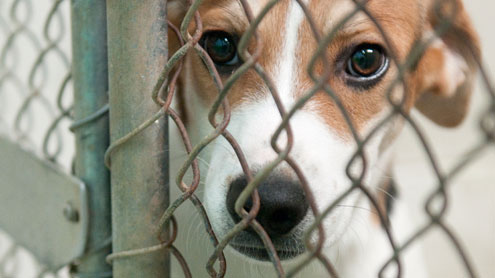When Shannon Walker devoted her home to the care of 14 dogs, she never wondered what would happen if she found herself without one.
Last April, Walker raced home from vaccinating animals at the Bibb County Animal Shelter to find her home completely destroyed by the tornado that swept through only minutes before.
“I knew that my family was all right, but I immediately started to search for all of my dogs,” Walker said. “We didn’t know what we were going to do with all of them yet, but we immediately started to round them up.”
At the time, Walker was fostering eight dogs by providing care for the animals until they could find a home. However, she soon noticed three of the dogs were missing.
After only a few days of searching, Peanut and LuLu, two of Walker’s foster dogs, were found with the help of a microchip implant and an identification tag.
Peanut had been taken to Canant Animal Hospital after the storm and was the only dog the hospital saw with a microchip.
Kayla Ary, practice manager for Canant, describes microchip implants as a device smaller than a grain of rice that is inserted under the skin of an animal and contains a pet identification number for rescue purposes.
“Often during emergencies, people take missing animals to an animal shelter or a veterinary office,” Ary said. “In these situations, microchips offer an inexpensive way for pets to be reunited with their owners.”
Because many of the animals that came through Canant after the tornadoes did not have microchip implants, the animal hospital relied on their Facebook page to reconnect pets and owners.
“Veterinaries and shelters have social media networks to post pictures of animals so owners can actually see if they look similar to their missing pets,” Ary said. “Also, Petfinder.com is a courtesy listing website that people can advertise lost animals to the public.”
Chase, or “Happy Feet,” was Walker’s third missing foster dog, and he was found on Petfinder.com two weeks after the storm. She had almost lost hope of ever finding him again.
“I’d had him several months before the tornado came through, and he was so skittish, such a sweet boy,” Walker said. “I was worried for Chase because he wasn’t microchipped or wearing his collar.
“I just kept praying he was all right, wherever he was. I really thought he was dead, and I just hoped if that was the case, he had died instantly and didn’t suffer.”
However, a family that lived only three blocks away from Walker found and fed Chase, who had been hiding under their bushes. They were able to connect with Walker through her advertisement for Chase on the Petfinder website.
Mindy Gilbert, field representative for the Humane Society of the United States, was serving as incident command for animal response in the Tuscaloosa area after April 27. She found that social media played a major role in the rescue of missing animals.
“Social media is a faster and extremely effective method for finding missing pets after disasters once the power grid is back up for communication,” Gilbert said. “It keeps people from having to travel long distances to make a positive identification.
“Many times it’s really useful when compared to the traditional messages. If someone is missing a medium brown dog, it is more effective to see a picture of the animal instead of just reading a description.”
However, Gilbert warns against the reliance on social media to find missing animals as opposed to traditional forms of communication such as fliers and word of mouth.
“After emergencies, there often isn’t electricity or cell phone signals to be able to use social media for rescue,” Gilbert said. “There are also communities of older people and retirees who don’t see social media as an early response. It’s really dependent on the situation, and it’s important that we don’t overlook the use of traditional messages.”









